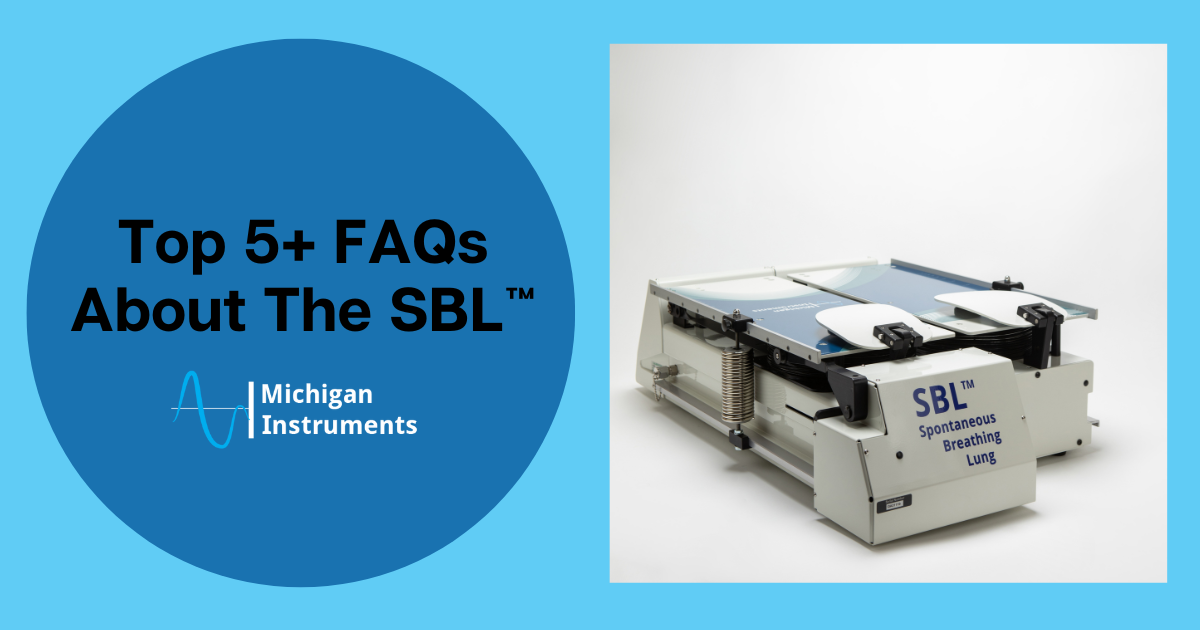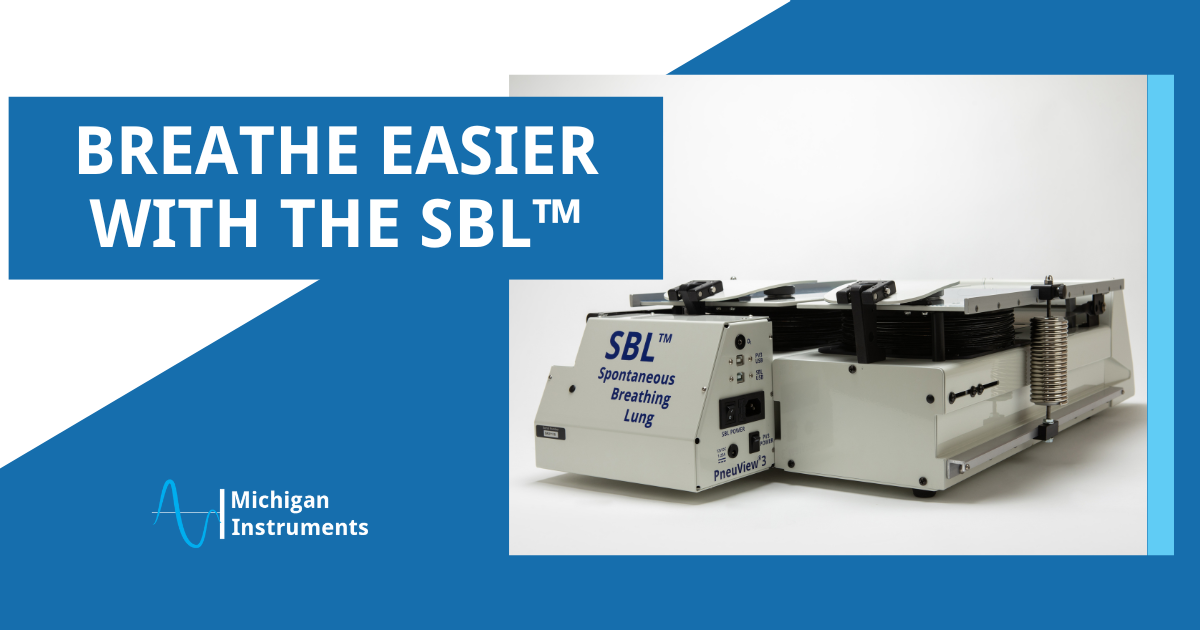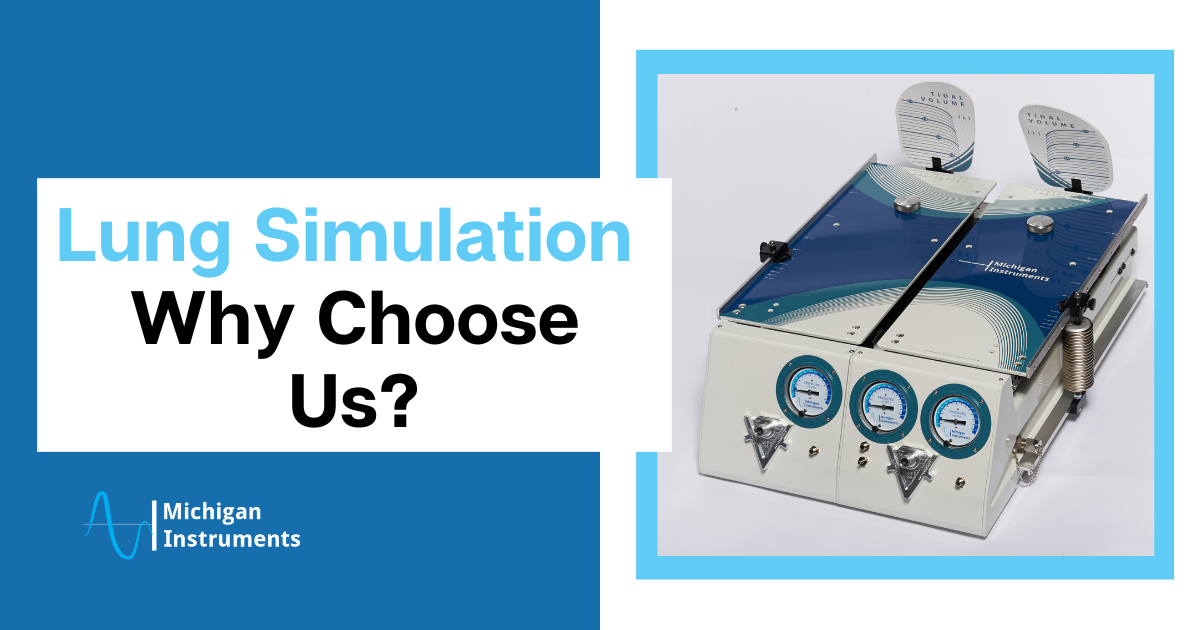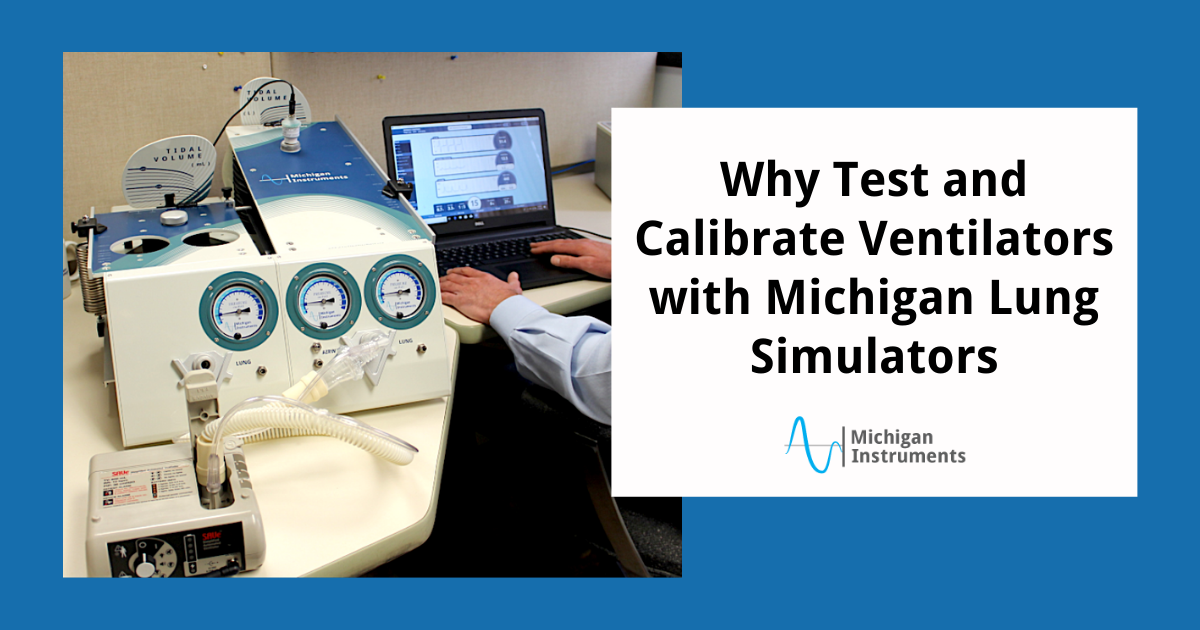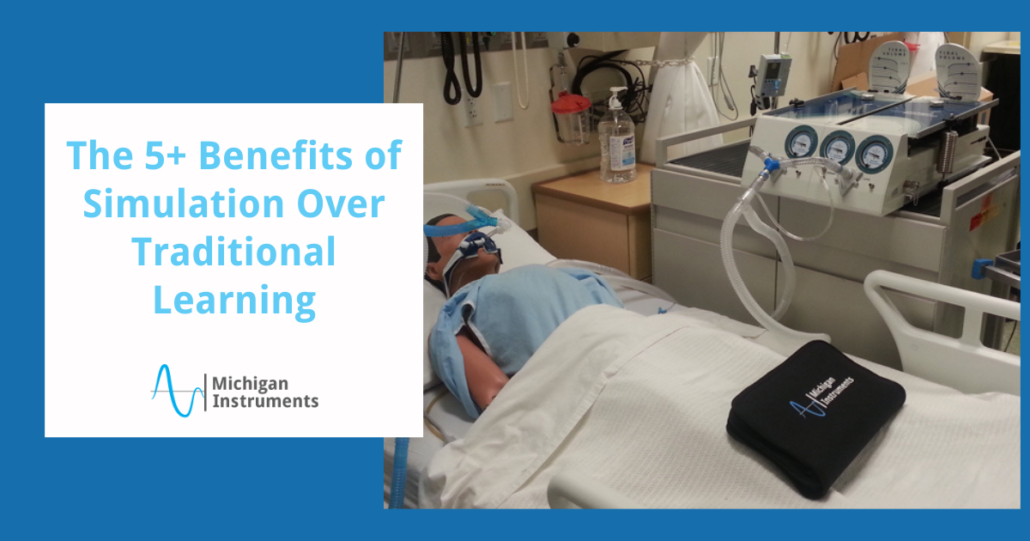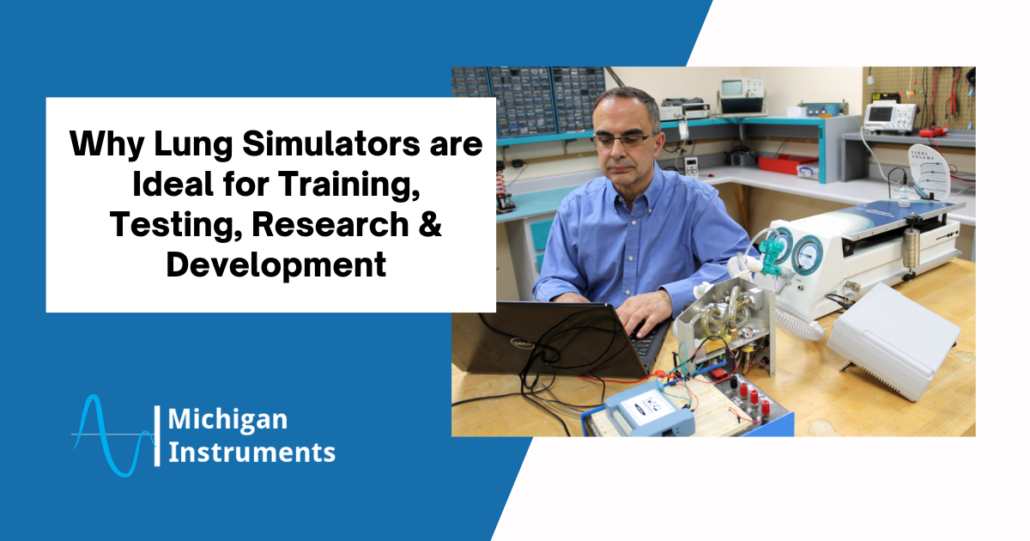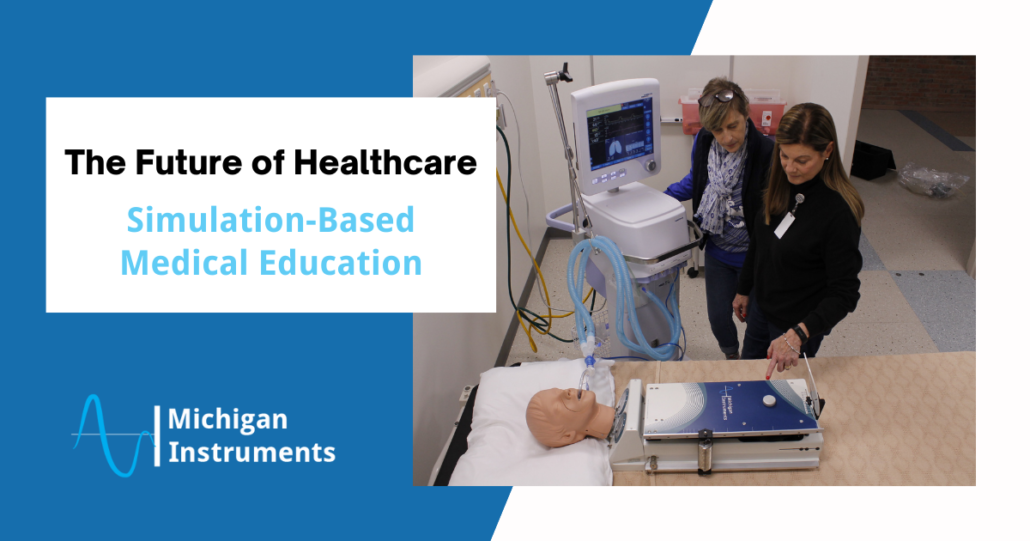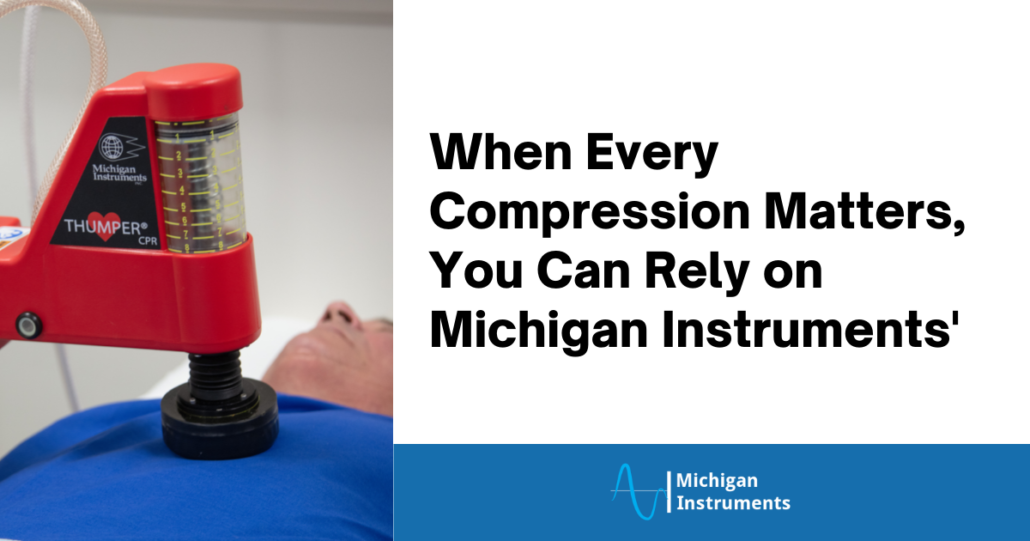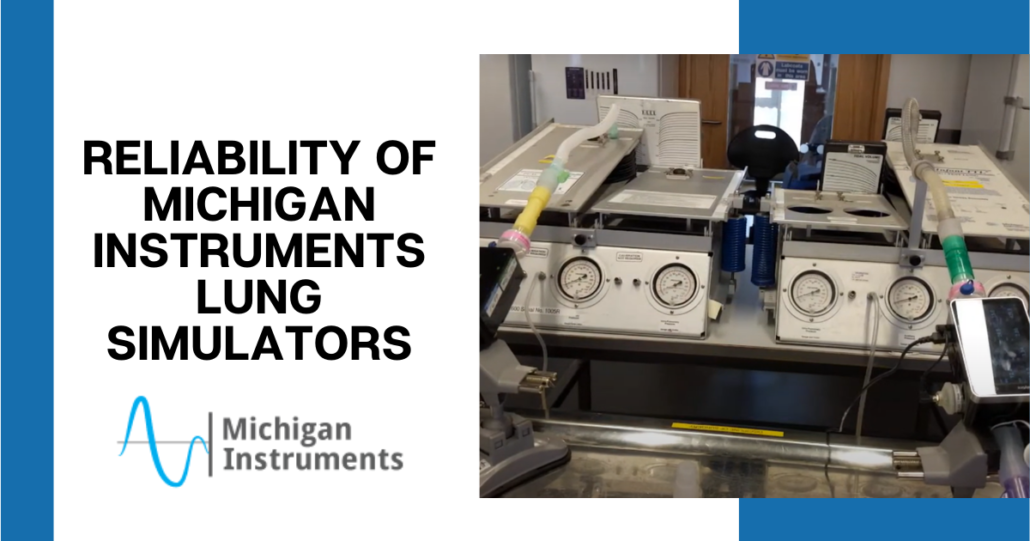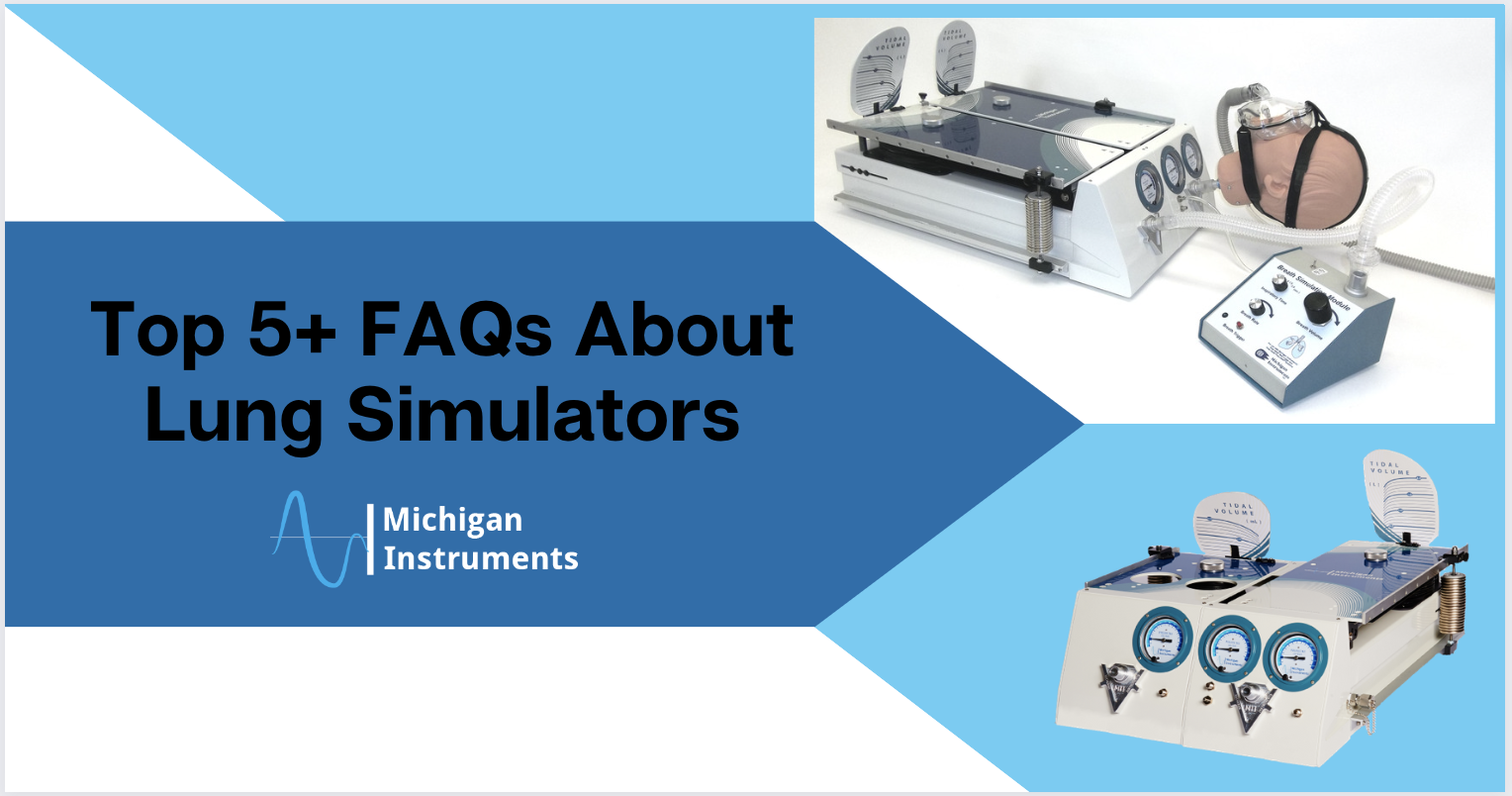
For over 45 years, our Michigan Lung Simulator has offered residual lung volumes and a dynamic response to therapy that realistically represents all the functions of the human pulmonary system. Our devices are more advanced now than ever, thanks to our ever-changing technology and dedication to research.
We receive many questions about our lung simulators and their operations. Below are the questions we see most often
1. What Is The Difference Between A “Test Lung” And A “Michigan Lung Simulator”?
We’ve used the terms “test lung,” “training test lung,” and “Michigan lung simulator” to describe our TTL® and PneuView® products. In some ways, these terms are interchangeable. However, in a broader sense, the term “test lung” may include devices that are very simplistic rubber or latex bags.
On the other hand, “lung simulators” describe a more complex system that accurately mimics the dynamic mechanical characteristics of the human pulmonary system.
2. What Is The Fundamental Purpose Of A Michigan Lung Simulator?
There are several situations and settings where the use of a lung simulator is crucial. A solid lung simulator represents the functions of the human pulmonary system, as well as a range of healthy and diseased lung conditions.
A lung simulator should allow you to create, monitor and control those forces. For the following applications and more, a high-quality lung simulator is needed:
- Designing mechanical ventilators and other respiratory apparatus
- Developing new modes of ventilation support
- Training respiratory care and other medical professionals
- Performing periodic testing and maintenance on ventilation and support devices
- Troubleshooting equipment problems using a realistic “load”
3. How Do The TTL® And PneuView® Systems Model The Dynamic Compliance And Resistance Characteristic Of The Human Lungs?
Our TTL® and PneuView® systems use a bellows and spring to simulate the compliance characteristics of the lung. The spring can be positioned at several different points along the Top Plate of the simulator to create a lung compliance that ranges from very compliant to normal to very non-compliant (or stiff).
The resistance characteristics of the lung are set using fixed-orifice parabolic resistors that may be positioned to add resistance to the upper and/or lower airway assembly. A range of resistors allow for simulation of both healthy and diseased lung conditions.
4. What Is Factory Calibration?
Factory calibration involves tuning all aspects of sensor, electronic, mechanical and software to ensure maximum accuracy of the measurements and simulated parameters provided by TTL® & PneuView® systems.
Calibration procedures include the setting of the compliance and resistance characteristics of the lungs, as well as setting offset and gain characteristics for each of the pressure transducer channels.
5. How Do I Read The Tidal Volume On The Lung Simulators?
Each simulated lung in the TTL® or PneuView® System has a physical volume scale behind the Top Plate. There is also a plastic pointer and label on the Top Plate that can be used to indicate lung volume.
To ensure the most accurate indication of lung volume, the pointer on the top plate must correspond to the compliance setting on the lung. When set appropriately, the arrow will point to the gas volume in the lung.
Note: When using PEEP or CPAP, the starting volume (baseline volume) is greater than zero. The tidal volume would be the total indicated volume minus the baseline volume.
The volume indicator lines on the label are curved, more so as the compliance setting decreases. This is due to the sideways distention of the bellows that occurs during filling of the lung under pressure.
6. Are Michigan Lung Simulators Suitable For Tests With Aerosols Or Just Dry Air Only?
Water vapor will not damage the simulator. However, we generally don’t recommend introducing aerosolized substances into the lung chambers of our TTL® and PneuView® simulators for the following reasons:
- Substances other than water can be corrosive to the polyurethane bellows, and/or may accumulate on the ribs of the bellows causing them to stick, become brittle, or not function properly.
- There is no simple way to “drain” the bellows of any accumulated fluid. If using sterile/demineralized water, you may blow dry gas through the unit until it is fully dried.
Many of our customers have used the TTL® or PneuView® specifically to evaluate aerosol delivery with various devices and/or breathing patterns. In such cases, the aerosolized substance is typically collected using a hydrostatic filter placed in the simulated airway, prior to entering the lung bellows.
Let Us Answer Your Questions
If you have any other questions about our lung simulators, visit our FAQ page or contact us directly!

